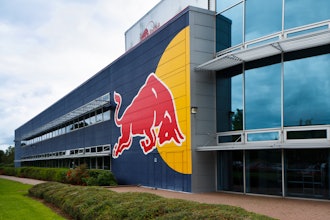Today, project owners and stakeholders seek to optimize virtual design and construction (VDC) in order to maximize its latest benefits for their project.
The benefits of VDC if properly implemented not only scrutinize estimates and reduce time through synthesizing efficient design and fabrication coordination, but also render cost certainty to maximize return on investment (ROI).
Harnessing the full power of VDC, exercising BIM, advanced BIM Uses, and interdisciplinary integration, a team can reduce the amount budgeted for a project by as much as 20 percent.
Here are the latest insights to optimize these benefits for your next project.
Target Value Delivery. Two key requirements are involved to elevate the value of VDC: knowing what’s important to keep—prioritization of value—and saving money on features that are not absolutely necessary—elimination of waste.
The first half of the value equation clarifies the scope very early in a project and prioritizes all items on the “wish list.” It is then easy—or at least easier—to decide which items must be eliminated because of cost. The other half of the value equation is discovering what parts of the design are not providing a value that justifies their cost.
Consider a case scenario of target value design. A team is awarded a project and it could take anywhere from six to eight weeks just to get drawings from the owner that might be in the form of TIF files—CAD, hand drawings, etc. In the project’s second phase, there would be as many as 12-15 different sites involved.
Although the team put in a request for the original drawings, to expedite schedule and design work, they laser scanned each individual site. As part of their deliverable to the contractor, the team had a hybrid model of point cloud and BIM data and was able to give a list of materials and 3D views for value-based decision making—not only prioritizing valuable project components, but also eliminate waste—as well as bidding.
What was the result? The project team was able to get tight, accurate bids and stay on track, or under design schedule for a very large program. Ultimately, VDC practices enabled the team to deliver a better project.
Technology + Data. BIM is a database in itself. To capitalize on this data, BIM files either by discipline or building system makes possible real-time communication between designers and estimators. Each party has access to the same data source enabling real time decision-making as conferring in small increments or making assumptions on drawings on a real-time basis results in cost savings. BIM allows the design and preconstruction teams the ability to count quickly what is being designed and find missing components or flag design errors.
Highly specific project elements and components are able to be easily identified. When project team members can see components and their relationship to the overall design, very informed decisions can be made in a holistic context. The model connects cost to data, enabling decision making to be made with associated cost implications.
And, trends in costs also become visible. These trends can include construction costs. So, if the project is trending to go over budget, it provides the opportunity for project designers to make strategic changes.
Consider a project example. A project plan included a platform for two air handlers; the platform needed to be bordered by a guard rail. The project team realized if they flipped the orientation of the air handlers to allow more convenient access to maintenance panels they could reduce grading and railing, while shrinking the platform. The team was able to visually demonstrate this, and connect the visual of the solution to the database to show the cost savings of design change. Instead of value engineering after cost estimating, the project team was able to perform value engineering during the process.
Time. Another critical optimization is time. An entire phase of a project is required for drawings from A&E to be developed by fabricators and contractors as the original drawings are not detailed to function as shop drawings. As a result, refining the design for fabrication takes time—from a business perspective, it’s wasted time. What if the shop-drawing level design happened earlier by having the skills in-house or bring the fabricators in earlier.
Today experienced A&E teams develop project design with concurrent input from the trades, such as mechanical, piping, and structural steel. Nearly all of the time consumed by repeated handoffs has been eliminated. Time saved is money saved: up to 10 percent of the budget. By completing the work faster, the team also saves money on overhead costs. When these savings are folded in with savings from optimizing the design, the cost savings can total 20 percent or more.
Optimizing VDC reveals how much time and manpower is spent just in making a project construction ready. This is a cost that is hidden from owners and sometimes even from less experienced design teams.
Cost Certainty. Owners and stakeholders want as much cost certainty as possible before moving forward with a project. Unless taking advantage of the full capabilities of VDC, estimators can’t project cost until a design is well developed. And, the owner may, in fact, need to wait even longer if a redesign is needed to bring a project back within budget. Utilizing VDC to the fullest extent, however, the estimator can begin preparing cost estimates while designers are still developing the project.
Highly detailed modeling helps to reduce construction costs because the team has a precise and comprehensive depiction of the components. Otherwise, poorly specified components are not accounted for, and this leads to guesswork that inevitably increases cost.
This has multiple benefits. Because uncertainty generates concern for risk mitigation, every project has a risk register. A project’s contingency fund to handle those risks may consume 5-10 pecent of the total budget. Aside from its value as an insurance policy, contingency is ultimately waste. Optimizing VDC allows the team to analyze each item in the register and identify ways to remediate. By reducing uncertainty, the team reduces the need for contingency and allows these resources to be invested. With the certainty made possible with VDC, owners are able to maximize ROI.
Today, project owners and stakeholders seek to harness the full power of VDC to realize benefits for their project. The great benefits of VDC, a proven technology if properly implemented , scrutinizes estimates, reduces time through synthesizing efficient design and fabrication coordination, and renders cost certainty to maximize ROI.
Lauren Collier, Associate AIA, is the Department Manager, VDC Global Initiatives and Senior Associate at SSOE Group, a global project delivery firm for architecture, engineering, and construction management. Her creative passion lies in Lean, continuous improvements, and innovative model/data use solutions for design and construction operations. Lauren leads a group of VDC technical leaders and model managers whose focus is implementing new innovative technologies and best practices in design and construction.






















